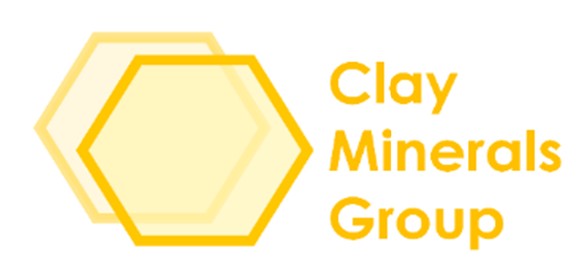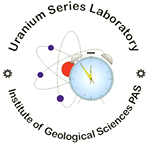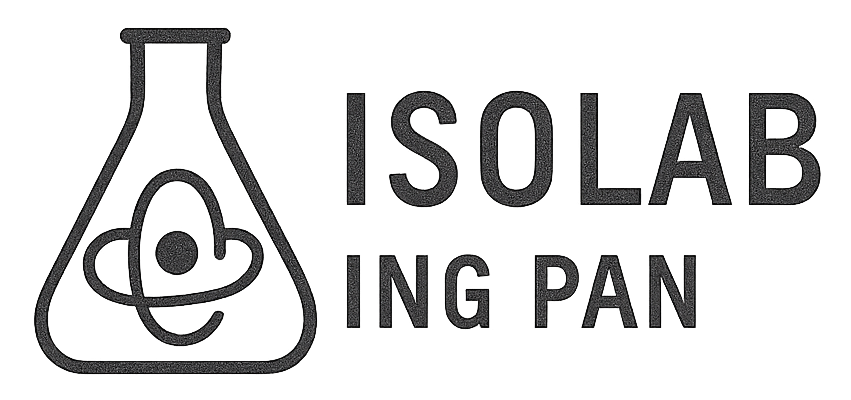| Laboratory/Team: | Selected scope of analyses/research: | Possible applications: | Contact: |
Clay Minerals Lab 
| - X-ray diffraction (XRD); qualitative and quantitative analyses;
- Infrared spectroscopy (FTIR);
- Thermogravimetry with gas analysis (TG-QMS);
- Spectrometer for K–Ar dating;
- Shale porosimetry and gas adsorption (N₂, CO₂, H₂, CH₄);
- Molecular modeling;
- Chemical laboratory: cation exchange capacity (CEC), layer charge (LC), UV-Vis analyses, fraction separation, chemical analysis of Na, K, and Li.
| - Qualitative and quantitative assessment of the mineralogical composition of rocks, soils, and other mineral materials, including analyses focused on clay minerals;
- Comprehensive characterization of materials for the raw materials, petroleum, ceramic, cement, and geotechnical industries, as well as environmental samples, etc.;
- Study of the thermal stability of materials and structural changes in individual mineral phases;
- Dating of clay minerals, rocks, sediments, etc.;
- Analytical support for the gas, hydrogen, and CO₂ storage industries, among others.
| Arkadiusz Derkowski, PhD DSc., Professor |
Uranium Series Lab 
| - Experimental studies of radioactive isotope migration, (bio)weathering of mining waste, and environmental phenomena in the context of geochemistry and radioactivity.
- Alpha, gamma, and LA-ICP-MS spectrometry,
- Trace element analysis,
- Measurements of natural and anthropogenic radioactivity.
| - Dating of sediments and soils for studies of environmental changes and assessment of river and lake bank stability,
- Analysis of radionuclide presence in the exploitation of geothermal and deep waters,
- Support for sanitary inspection services, water supply companies, and geothermal facilities (radioactivity in water),
- Determination of the age of fossil sediments in mine site reclamation,
- Analysis of the quality of alternative fuels and biofuels.
| Michał Gąsiorowski, PhD, DSc. |
Geochronology & Isotope Geochemistry Lab 
| - Studies of the timing and rates of geological processes, and records of magmatic, orogenic, paleoecological, and archaeological events.
- U–Pb, Lu–Hf, Sm–Nd dating,
- ICP-MS and ICP-OES spectrometry,
- Sample preparation under ultra-clean conditions.
| - Dating of rocks and metal ores to assess resource potential for mining,
- Geochemical identification of deposits in exploration projects (including geothermal, copper, and lithium),
- Reconstruction of tectonic deformation history for geotechnical and engineering companies,
- Studies of environmental contamination with heavy metals (e.g., Cd, Pb, Hg) related to industrial projects,
- Quality control and provenance analysis of stones used in construction and monument conservation,
- Exploration of metal deposits, geotechnical genesis analyses, reconstruction of geological history, assessment of radioactive contamination, and support for archaeology and paleogeography.
| Robert Anczkiewicz, PhD, DSc., Professor |
 | - Analyses of stable isotopes of C, O, N, H, and S in organic, inorganic, and water samples.
| - Identification of pollution sources in drinking and groundwater (agriculture, industry, wastewater),
- Reconstruction of climatic and environmental conditions in geological, soil science, paleogeographic, archaeological, and paleontological studies,
- Reconstruction of diet in ecology and paleoecology,
- Analysis of element cycles in the biogeohydrosystem.
| Maciej T. Krajcarz, PhD, DSc. |
Seismic Interpretation and Basin Analysis Group 
| - Interpretation of 2D and 3D seismic data
- 2D seismic modeling
- Modeling of sedimentary basin evolution
- Qualitative and quantitative tectonic reconstructions
| - Support for the exploration of crude oil, natural gas, geothermal waters, brines, mineral waters, and CO₂ sequestration sites
- Support for geological and geophysical studies related to renewable energy investments
- Analysis of tectonic movement hazards, e.g., for the assessment of nuclear power plant locations and construction projects
| Piotr Krzywiec, PhD, DSc., Eng . |
Fission Track Dating Lab | - Analysis of defects in mineral structures resulting from the radioactive decay of ²³⁸U atoms.
| - Dating of rocks and minerals in the exploration of strategic mineral deposits;
- Reconstruction of geological history for mining and geothermal purposes.
| Aneta A. Anczkiewicz, PhD |
Geological Sample Preparation Lab | - Comprehensive separation of heavy minerals using heavy liquids – from crushing to obtaining the separate fraction and preparing polished mounts;
- Separation of individual major and accessory minerals, including obtaining pure separates of phases such as garnet, apatite, zircon, or monazite, most commonly for isotopic analyses;
- Extraction of microfossils, including foraminifera and dinocysts;
- Preparation of polished 1-inch mounted sections.
| - Sample preparation for analytical and academic institutions
- Supporting laboratories for raw material and construction analyses
| Anna Zagórska. MSc. Przemysław Gedl, PhD, DSc. |
Depositional Systems Research Group | - Studies of sedimentary sequences, provenance of sedimentary material, depositional processes, and post-depositional changes in sedimentary basins.
| - Interpretation of sedimentary structures for engineering geology, geothermal, and resource exploration companies;
- Assessment of the stability and potential of mineral deposits (e.g., sands, clays) for the construction and raw materials industries;
- Stratigraphic documentation for investment risk assessment in infrastructure projects.
| Stanisław Mazur, PhD, DSc, Professor |
Quaternary Geoecology Research Group | - Stable isotope analyses in the biogeosystem
- Geoarchaeology
| - Assessment of anthropogenic impact on ecosystems,
- Reconstruction of element cycling in the biogeosystem,
- Reconstruction of element cycling in the hydrogeosystem,
- Geoarchaeological analyses: stratigraphy, depositional and post-depositional processes at archaeological sites.
| Maciej T. Krajcarz, PhD, DSc. |
Petrogenetic Processes Research Group | - Studies of the genesis, transformation, and composition of minerals in rocks — petrogenetics.
| - Identification of processes and conditions of rock formation for the extractive industry (including metals, stones, and ceramic raw materials);
- Support for analyses conducted by companies in the stone, prefabrication, and monument conservation sectors;
- Petrochemical assessments for the geotechnical and raw materials industries;
- Scientific documentation of the genesis of raw materials used in construction and architecture.
| Bartosz Budzyń, PhD, DSc, Professor |
Environmental Change Research Group - Climate and Humans | - Reconstruction of natural environmental changes caused by climate variations and human activity;
- Diatom analysis with interpretation;
- Palynological analysis with interpretation;
- Sedimentological and palynofacies analysis;
- Analysis of Cladocera (water flea) remains with interpretation;
- Interpretation of geochemical and isotopic sediment analyses;
- Analysis of lake and peat (bog) sediments .
| - Support for paleoclimate and climate modeling studies in the environmental sector;
- Consulting on the assessment of ecological and climatic changes in environmental protection projects;
- Expert analyses for geological tourism, environmental education, and protected area planning;
- Analysis of lake and peat sediments for environmental research, environmental protection agencies, and local governments.
| Joanna Mirosław-Grabowska, PhD, DSc. |
Biogeosystem Modeling Research Group | - Reconstruction and modeling of biogeochemical processes in natural systems.
| - Simulations of paleo/oceanographic, paleo/climatic, and anthropogenic changes;
- Reconstruction and prediction of marine ecosystem conditions;
- Fluorescence imaging of experiments at the intersection of geological and biological sciences.
| Jarosław Tyszka, PhD, DSc, Professor |

